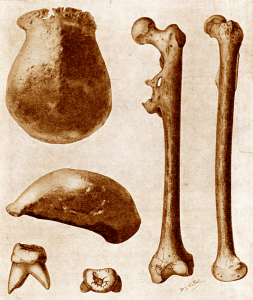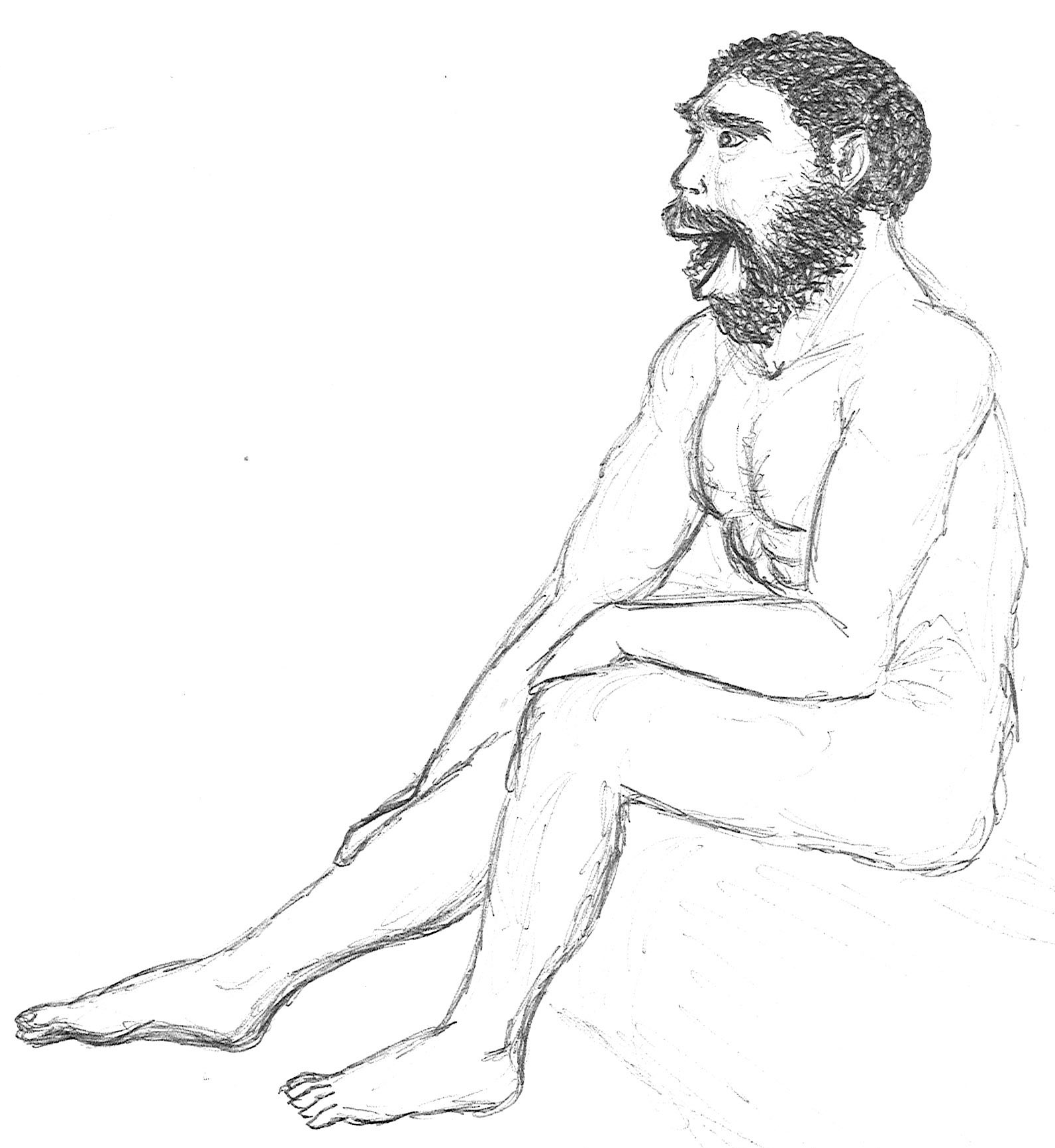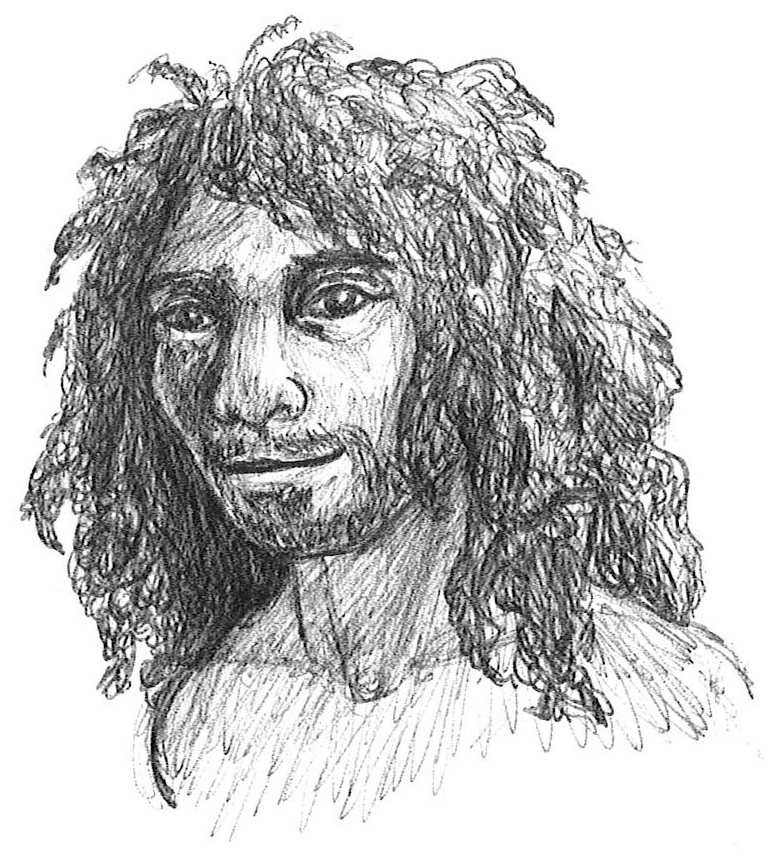Part IV: Pleistocene Epoch
29. Homo erectus
Homo erectus (1.8 mya)
(“human” / “upright”)

SITES
Java: Trinil, Modjokerto, Sangiran, Ngandong
China: Zhoukoudian, Taiwan, and sites in Yunxian, Hexian, and Lantian counties
India: Narmada
Turkey: Kocabas
PEOPLE
While there are many people associated with Homo erectus, I have listed a few of the historic names.
Java: Eugène Dubois
China: J. Gunnar Andersson, Davidson Black, Franz Weidenreich
INTRODUCTION
Homo erectus is the genus and species combination that was retained for all mainland Asian, Taiwanese, and Javanese fossil material.
PHYLOGENY
The most popularly held notion is that Homo erectus is derived from H. ergaster or a pre-ergaster form that “quickly” moved out of Africa into Eastern Europe and Southeast Asia. However, H. georgicus is another possibility for the ancestor of H. erectus.
DISCOVERY AND GEOGRAPHIC RANGE
Eugène Dubois discovered the first H. erectus material at the Trinil site (see Figure 29.1) on the Solo River in Java in 1891. While there are problems with the dates, the oldest material from the Javanese site of Modjokerto may be “contemporary” with African and Georgian material at 1.8 mya. Other famous Javanese sites are Sangiran, Ngandong, and Trinil. Java is part of the Sunda shelf, and when initially colonized by H. erectus, it was connected to mainland Asia (see Figure 29.2). After reaching Java and possibly other areas of Southeast Asia, later groups of H. erectus moved north into China. The earliest Chinese fossils are dated to 1 mya. First assigned to the genus Sinanthropus (“Chinese man”), the material was later included in our own genus after Franz Weidenreich pointed to the similarities between the various assemblages of erectus-like fossils and other extinct and modern humans. The first fossils were discovered at the now famous site of Zhoukoudian (formerly Choukoudian), near Beijing (formerly Peking and hence the term, “Peking Man”). The local people called them “dragon bones” and were using them for medicinal purposes. Material from Zhoukoudian spans a time period of over 200,000 years, from 460 to 230 kya, with three distinct cultural periods thought to be in evidence.
One of the great mysteries of paleoanthropology surrounds the Zhoukoudian material. Weidenreich and his predecessors, Davidson Black and J. Gunnar Andersson, had amassed an unprecedented amount of fossil material from the site. Due to the imminent Japanese invasion, Weidenreich packed up the fossil material in 1941 with the intent of having it shipped to the United States. However, the material disappeared, and all that remains are Weidenreich’s notes, drawings, and some casts of the original fossils.
Other Chinese sites are found in the counties of Lantian, Yunxian, and Hexian. A new discovery on the island of Taiwan has been linked to H. erectus, with the closest resemblance to the Hexian remains (Chang et al. 2015). Finally, the Narmada site in India has been a topic of debate for a long time but it has now been decided, at least by a portion of the paleoanthropological community, as being Homo erectus.

PHYSICAL CHARACTERISTICS
While many of the physical characteristics of H. erectus are similar to H. ergaster, the Asian species is unique in a number of ways. Asian forms exhibit a thickening along the sagittal suture, termed a sagittal keel. The keel gives the skull a pentagonal shape in cross-section. It is unknown whether the keel served a function.

Their incisors were shoveled, an adaptation that increases the stress resistance of teeth, especially when using them as tools. The molar enamel was characterized by a unique wrinkling pattern. Both of those dental characteristics are found in modern people of Asia and Asian ancestry and are interpreted by some scholars as evidence of regional continuity; in other words, there was a gradual evolution from erectus-like forms through archaic human populations and into modern populations in multiple areas via gene flow.

Review of Derived Characteristics
- Sagittal keel.
- Shoveled incisors.
- Wrinkled molar enamel.
ENVIRONMENT AND WAY OF LIFE

Javanese sites in the early Pleistocene would have been conducive to tropical-adapted animals like Homo erectus. The area was part of the land bridge that was exposed beginning ~2.5 mya, making it accessible by land. Pleistocene Java was a mix of environments consisting of a variety of forest types, freshwater lakes and rivers, brackish marshes, and grasslands (Blain 2012).
At the time of H. erectus occupation, the site of Zhoukoudian, China, was in a transitional zone between temperate steppe and boreal forest. It would thus have been seasonally cold and would likely only have been habitable during the warmer months.
Culturally and technologically, Asian H. erectus are thought to have been somewhat similar to African H. ergaster. One of the key differences is the fact that the Acheulian industry never made it to Asia. The earliest inhabitants of Asia carried with them the Oldowan tool tradition, but the inventors of the Acheulian tradition apparently never followed. On maps, the Movius Line (see Figure 29.5) demarcates the border between the two tool traditions during the Pleistocene. It has been suggested that bamboo would have been a suitable material for making tools, which could explain the paucity of stone tools found.
Populations of H. erectus survived in Asia for much of the Pleistocene Epoch. Recent redating of the Javanese site of Ngandong has yielded dates as recent as 53–27 kya. Even more surprising is the recent discovery of dwarfed hominins on the island of Flores, termed H. floresiensis, that have been dated to 18 kya. H. floresiensis is thought to be descended from a population of H. erectus that adapted to limited island resources by becoming dwarfed in size.

